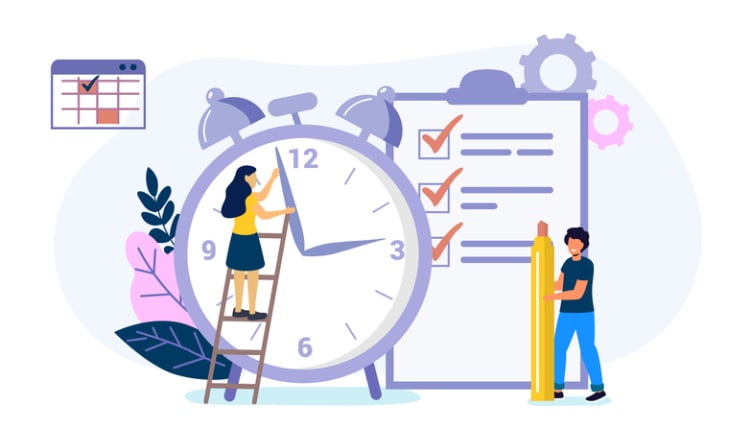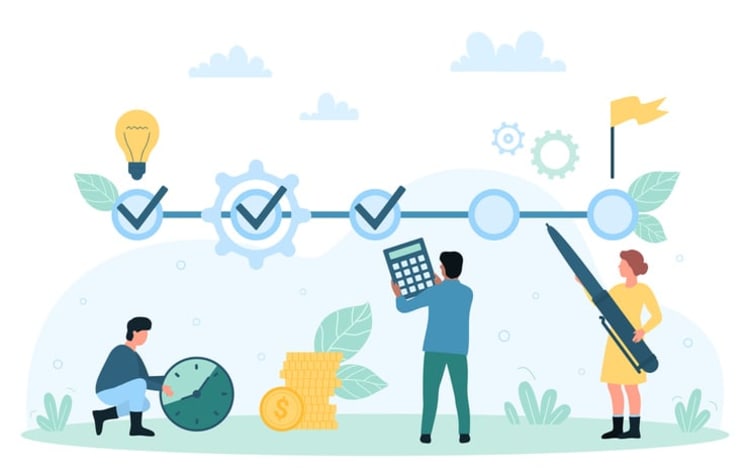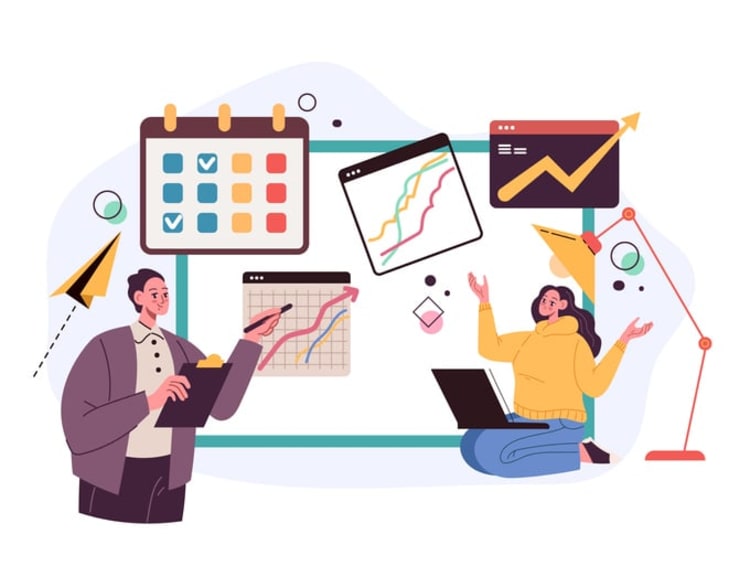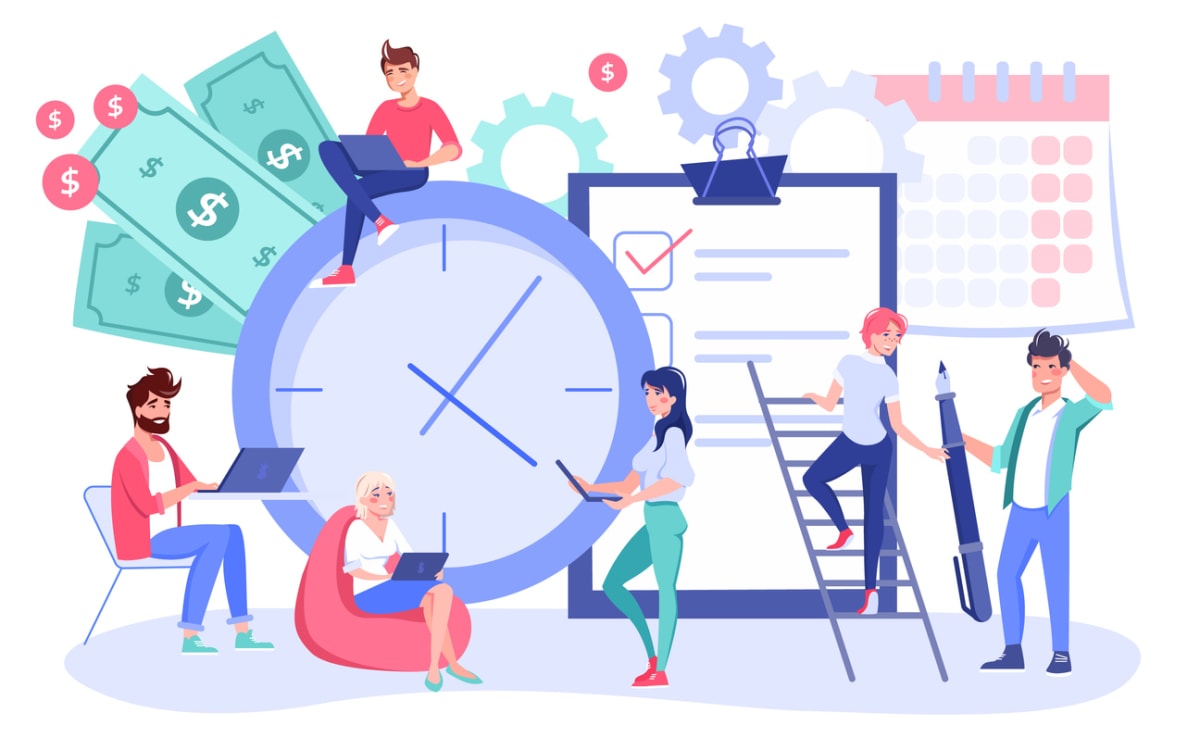In today’s fast-paced world, effective communication and collaboration are crucial for the success of any organization. One key component in achieving this success is through the use of recurring meetings. These recurring meeting sessions not only enhance team communication but also drive projects forward and foster accountability among team members. But how can you make the most of these recurring meetings to ensure maximum productivity? In this blog post, we’ll explore the purposes of recurring meetings, tips for making them more productive, and tools and technologies that can help you achieve your goals. So let’s dive in!
Short Summary
- Recurring meetings are essential for effective communication, driving projects forward and fostering accountability.
- Google Calendar and Outlook make it easy to schedule recurring meetings with clear agendas, relevant attendees and asynchronous communication methods to maximize productivity.
- Tools such as meeting management platforms, note-taking tools & transcription services can help enhance the efficiency of recurring meetings.
The purpose of recurring meetings

Recurring meetings serve various purposes, such as improving team communication, driving projects forward, and fostering accountability among team members. Whether you’re part of a project team or managing a group of employees, scheduling recurring meetings ensures that everyone stays on the same page and contributes effectively to the common goal.
Popular calendar tools, such as Google Calendar and Outlook, can help you schedule recurring meetings with ease. By effectively managing your recurring meetings, you can guarantee more productive sessions and maximize the overall productivity of your team.
Team communication
Recurring meetings, like weekly team meetings, play a vital role in maintaining open communication channels within teams, ensuring that everyone remains well-informed and connected. In-person meetings foster smoother communication and collaboration, which is why it is essential to schedule recurring meetings on days when team members are physically present.
For remote employees, practicing inclusive meeting behaviors, such as pausing for their input and ensuring the proper functioning of audio equipment, is vital to make them feel included in large team meetings.
Driving projects forward

Recurring meetings, particularly for project teams, can help drive projects forward by providing a platform to review progress, confront obstacles, and set objectives for upcoming meetings. This consistent approach to checking-in on a project’s progress fosters a sense of unity among team members and ensures that everyone’s efforts align with the company’s mission and vision.
Regular meetings also provide an opportunity for team members to share their ideas and collaborate on solutions.
Fostering accountability
Regularly scheduled meetings encourage team members to be accountable for their tasks and responsibilities, leading to improved overall performance. When team members know that they’ll be discussing their progress and contributions in upcoming meetings, they’re more likely to stay on top of their tasks and take ownership of their roles.
This increased accountability can lead to better collaboration, improved communication, and a more productive team overall.
Scheduling recurring meetings with ease

Scheduling recurring meetings doesn’t have to be a daunting task. With the help of popular calendar tools like Google Calendar and Outlook, you can easily set up your meetings and ensure that everyone is aware of the meeting schedule.
These tools not only help you stay organized but also allow you to focus on what truly matters – making your meetings as productive as possible.
Google Calendar
Google Calendar allows users to easily set up recurring meetings by selecting the desired frequency and adding relevant details. Simply create a new event, choose the “Repeat” option, and configure the recurrence settings according to your needs. Don’t forget to add an appropriate event title and invite the necessary participants to ensure everyone is informed about the meetings.
By leveraging Google Calendar, you can effortlessly manage your recurring meetings and keep your team connected and informed.
Outlook
Outlook offers similar functionality, enabling users to create recurring meetings with customizable recurrence settings. To schedule a recurring meeting in Outlook, open the Calendar section, create a new appointment, and select the “Recurrence” button. This will open a dialog box allowing you to configure the recurrence pattern, frequency, and end date for your meeting.
Once the settings are adjusted, click “OK” or “Save & Close” to save the recurring meeting. With Outlook, you can ensure that your team stays on track and focused on their tasks.
Tips for productive recurring meetings

To ensure that your recurring meetings are as productive as possible, it’s essential to follow some best practices. By creating clear agendas, inviting only relevant attendees, and utilizing asynchronous communication methods, you can maximize the productivity of your meetings.
A well-defined agenda should be included in the calendar invite for each meeting, along with a hyperlink to the agenda itself, ensuring that everyone has access to the topics to be discussed. This not only helps maintain focus during the meeting, but also ensures that all important topics are covered.
Clear agendas
Establishing a clear agenda for each meeting is crucial in keeping discussions focused and ensuring that all important topics are covered. An effective meeting agenda should cover the topics to be discussed, the time allotted for each discussion point, the expected outcomes, a review of all discussion points, and any next steps and deliverables.
By setting a clear agenda, you can ensure that your team stays on track and addresses all relevant issues during the meeting.
Relevant attendees
Inviting only relevant meeting attendees is essential in ensuring that everyone present can contribute meaningfully to the discussion. Be sure to review the attendee list on a regular basis and make any necessary adjustments to accommodate new or removed attendees.
Keeping the invited attendees informed about any changes or updates to the meeting will ensure that everyone is aware of the meeting’s purpose and can participate effectively.
Asynchronous communication
Asynchronous communication methods, such as email or messaging apps, can be used to gather information and updates before meetings, reducing the need for lengthy status updates during the meeting itself. By collecting all necessary information prior to the meeting, you can ensure that the meeting time is used effectively for more in-depth discussions and problem-solving.
This approach not only saves time but also improves the overall efficiency of your recurring meetings, making a well-planned meeting request essential.
Types of recurring meetings and their benefits

Different types of recurring meetings serve various purposes, including one-on-one meetings for individual feedback, all-hands meetings for company-wide updates, and project meetings for tracking progress.
Understanding the different types of meetings and their benefits can help you choose the right approach for your team’s needs and ensure that your meetings are as productive as possible.
One-on-one meetings
One-on-one meetings provide an opportunity for managers and employees to discuss individual performance, goals, and concerns. These meetings offer a chance for personalized feedback, enabling employees to assess their progress and receive guidance from their manager.
By incorporating one-on-one meetings into your recurring meeting schedule, you can foster trust, collaboration, and open communication within your team.
All-hands meetings
All-hands meetings bring the entire company together to share updates, celebrate successes, and address challenges. These meetings promote transparency and alignment, reinforce clarity, and foster a sense of unity within the organization.
By holding regular all-hands meetings, you can ensure that all employees are informed and engaged, contributing to the overall success of your organization.
Project meetings
Project meetings help keep projects on track by providing a platform for discussing progress, addressing challenges, and setting goals. These meetings offer a valuable platform to monitor progress and ensure alignment of team objectives, while also providing a conducive environment for team members to generate innovative ideas and solutions.
By conducting regular project meetings, you can keep your team focused and ensure that your projects are completed on time and to the highest standards.
Case studies: successful implementation of recurring meetings

Recurring meetings have been successfully implemented in various industries, showcasing the versatility and effectiveness of this approach. Medical professionals have used recurring meetings for remote patient check-ins and ongoing support, while research teams have utilized them for progress updates and collaboration.
These examples demonstrate the power of recurring meetings in improving communication, collaboration, and productivity across diverse fields.
Medical professionals
In the medical field, recurring meetings have been employed to remotely monitor patients’ progress and provide continuing support. By leveraging recurring meetings, medical professionals can ensure that their patients receive the optimal care and support they need, even when they cannot physically meet with them.
This innovative approach to patient care showcases the potential of recurring meetings to improve communication and collaboration in the medical industry.
Research teams
Research teams have also found success in implementing recurring meetings to discuss updates, share findings, and collaborate on projects. Regular meetings enable research teams to stay current with team developments, ensuring that everyone is on the same page and working toward common objectives.
In this context, more productive recurring meetings have proven to be an invaluable tool for driving progress and fostering innovation, as well as planning for new meetings and future meetings.
Tools and technologies to enhance recurring meetings

Several tools and technologies can enhance the effectiveness of recurring meetings, making them an even more powerful tool for improving communication and collaboration. By leveraging meeting management platforms like Kumospace, note-taking and collaboration tools, and meeting transcription services, you can ensure that your recurring meetings are as productive and efficient as possible.
These tools can help you capture and share meeting notes, assign tasks, and track progress.
Meeting management platforms
Meeting management platforms can help streamline the scheduling and organization of recurring meetings. These platforms offer features like automated reminders, agenda creation, task tracking, and collaboration tools, making it easier for you to manage your meetings and keep your team on track.
By utilizing a platform like Kumospace, you can focus on what truly matters – making your meetings as productive as possible in a collaborative virtual environment.
Note-taking and collaboration tools
Note-taking and collaboration tools can improve meeting productivity by allowing attendees to easily capture and share information during meetings. Tools like Kumospace, Monday.com, Aha!, EQUP, Evernote Teams, Notion, Microsoft OneNote, Google Keep, and Nimbus Note can help your team stay organized and ensure that all important information is captured and shared efficiently during meetings.
By incorporating these tools into your recurring meetings, you can enhance the overall productivity and effectiveness of your team.
Meeting transcription services
Meeting transcription services can help create accurate records of meeting discussions, making it easier to review and reference important information later. By providing an efficient way to capture and store accurate records of meeting discussions, transcription services enable easy review and reference of crucial information at a later stage.
Utilizing transcription services as part of your recurring meeting strategy can further optimize the efficiency and productivity of your meetings.
Summary
In conclusion, recurring meetings are a powerful tool for enhancing team communication, driving projects forward, and fostering accountability among team members. By following best practices, such as creating clear agendas, inviting only relevant attendees, and utilizing asynchronous communication, you can ensure that your recurring meetings are as productive as possible. Furthermore, leveraging tools and technologies like meeting management platforms, note-taking and collaboration tools, and meeting transcription services can help optimize the efficiency and effectiveness of your meetings. So, why not harness the power of recurring meetings to propel your organization to new heights of success?
Frequently Asked Questions
An example of a recurring meeting is one that repeats regularly, such as an account manager meeting every Thursday with the accounts team.
Zoom allows you to schedule meetings with multiple occurrences so that each occurrence uses the same meeting ID and settings. You can schedule these meetings in daily, weekly, and monthly increments, and set a recurring meeting to be used at any time.
With a virtual platform, like Kumospace, meetings can be easily scheduled without having to recreate a link for every new meeting.
To lead a recurring meeting, create an agenda and statement of purpose, follow a regular schedule, send agendas in advance, encourage participation, and end meetings with clear action items to ensure success.
This will help ensure that the meeting is productive and that everyone is on the same page. It will also help keep the meeting focused and on track. By sending agendas in advance, participants can come prepared with questions and ideas. Encouraging participation will help to ensure that participation is encouraged.
Recurring meetings are essential for strengthening team communication, driving projects to completion, and fostering a sense of accountability.
Scheduling recurring meetings is simple with popular calendar tools like Google Calendar and Outlook.





